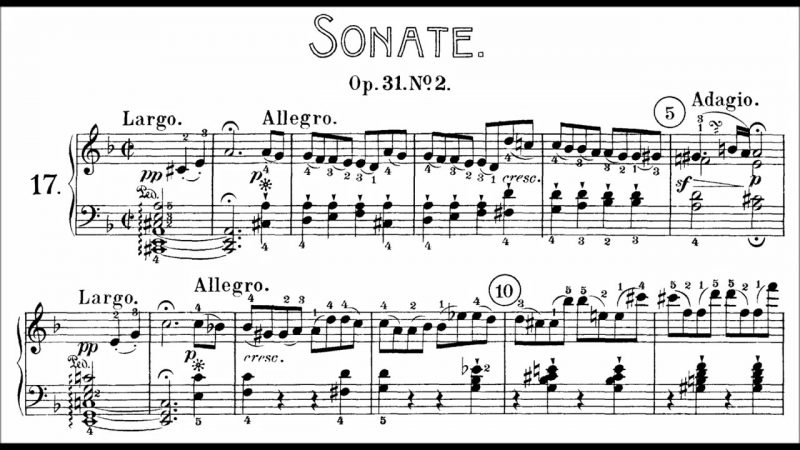The musician as curator
When we consider the role musician as “curator”, we tend to think of someone who organizes a concert series or music festival, much in the same way as a museum curator organizes exhibitions.
Opening of Beethoven’s Piano Sonata No.17 Op. 31/2
At a recent piano masterclass I attended, the tutor talked about “curating every note” and I really like this notion of the musician as the personal curator of the music, its sound and interpretation. In practice, what this means is that when we study and learn music, we should attend to every single detail in the score. This not only ensures that we honour the composer’s intentions, but also allows us to study the music in depth so that our interpretation and communication of it is both faithful and personal, thus creating a unique listening experience for our audience. And so for each and every note, rest and fermata, dynamic or articulation marking, and all the other details that make up a musical score, one should consider how and why that marking is there. What is its purpose? What effect is the composer suggesting? What stories or emotions lie behind those notes and markings?
Beethoven: Piano Sonata No. 17 in D Minor, Op. 31, No. 2, “Tempest” – I. Largo – Allegro
This detailed curatorial approach is particularly appropriate for Classical Period music (such as the music of Haydn, Mozart and Beethoven) where all the little articulation marks, in particular, need to be observed because of their significance to the sound and intent of the music. Even the tiniest two-note slurs in Mozart or Beethoven, for example, create wonderful effects if observed correctly – a little more emphasis on the first note of a two-note slur and a fractional shortening of the second note to create tiny separations, redolent of string articulation. Mozart and Beethoven are both very specific in their markings: take the first movement of Beethoven’s Tempest Sonata Op. 31 No. 2, with its plethora of drop slurs which, when observed correctly, bring incredible drama and energy in those opening bars. We ignore these details at our peril for they bring the music to life with vibrancy and vivid colour.
Mozart: Piano Sonata K. 281 – II. Andante amoroso
As players and performers, at whatever level we play, we have a responsibility towards the music, and for me, this is the broader definition of the musician as a “curator”. It is a huge privilege to be able to play these great works by Bach and Haydn, Mozart and Beethoven et al – works that rank alongside Aristotle and Shakespeare in their magnitude and cultural importance. One can feel like a conservator, or a curator, taking responsibility for them and sharing them with others. It is a cultural gift – a gift to oneself, and a gift to those who love to listen to the music.
